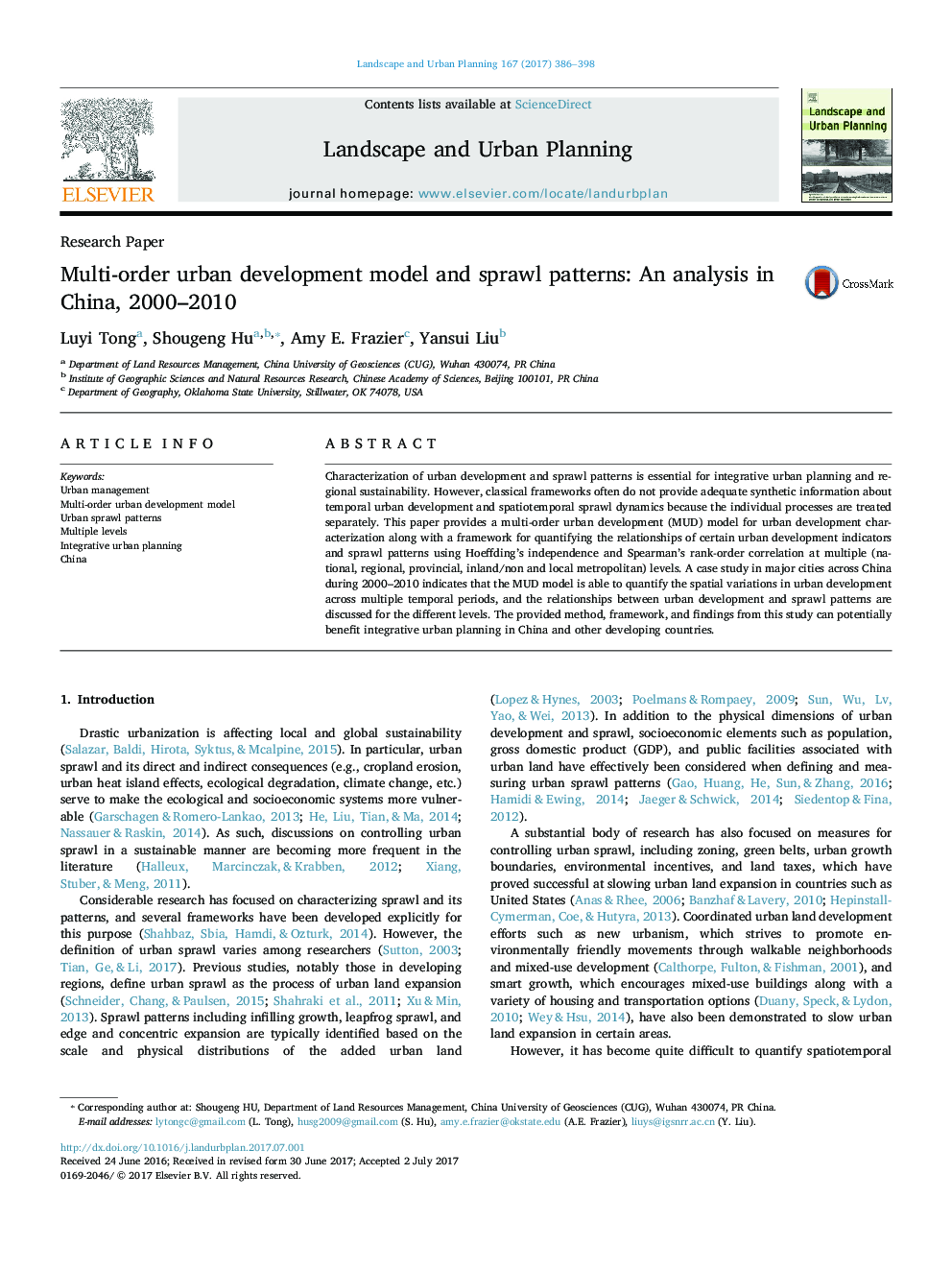| Article ID | Journal | Published Year | Pages | File Type |
|---|---|---|---|---|
| 5114969 | Landscape and Urban Planning | 2017 | 13 Pages |
Abstract
Characterization of urban development and sprawl patterns is essential for integrative urban planning and regional sustainability. However, classical frameworks often do not provide adequate synthetic information about temporal urban development and spatiotemporal sprawl dynamics because the individual processes are treated separately. This paper provides a multi-order urban development (MUD) model for urban development characterization along with a framework for quantifying the relationships of certain urban development indicators and sprawl patterns using Hoeffding's independence and Spearman's rank-order correlation at multiple (national, regional, provincial, inland/non and local metropolitan) levels. A case study in major cities across China during 2000-2010 indicates that the MUD model is able to quantify the spatial variations in urban development across multiple temporal periods, and the relationships between urban development and sprawl patterns are discussed for the different levels. The provided method, framework, and findings from this study can potentially benefit integrative urban planning in China and other developing countries.
Keywords
Related Topics
Life Sciences
Agricultural and Biological Sciences
Ecology, Evolution, Behavior and Systematics
Authors
Luyi Tong, Shougeng Hu, Amy E. Frazier, Yansui Liu,
